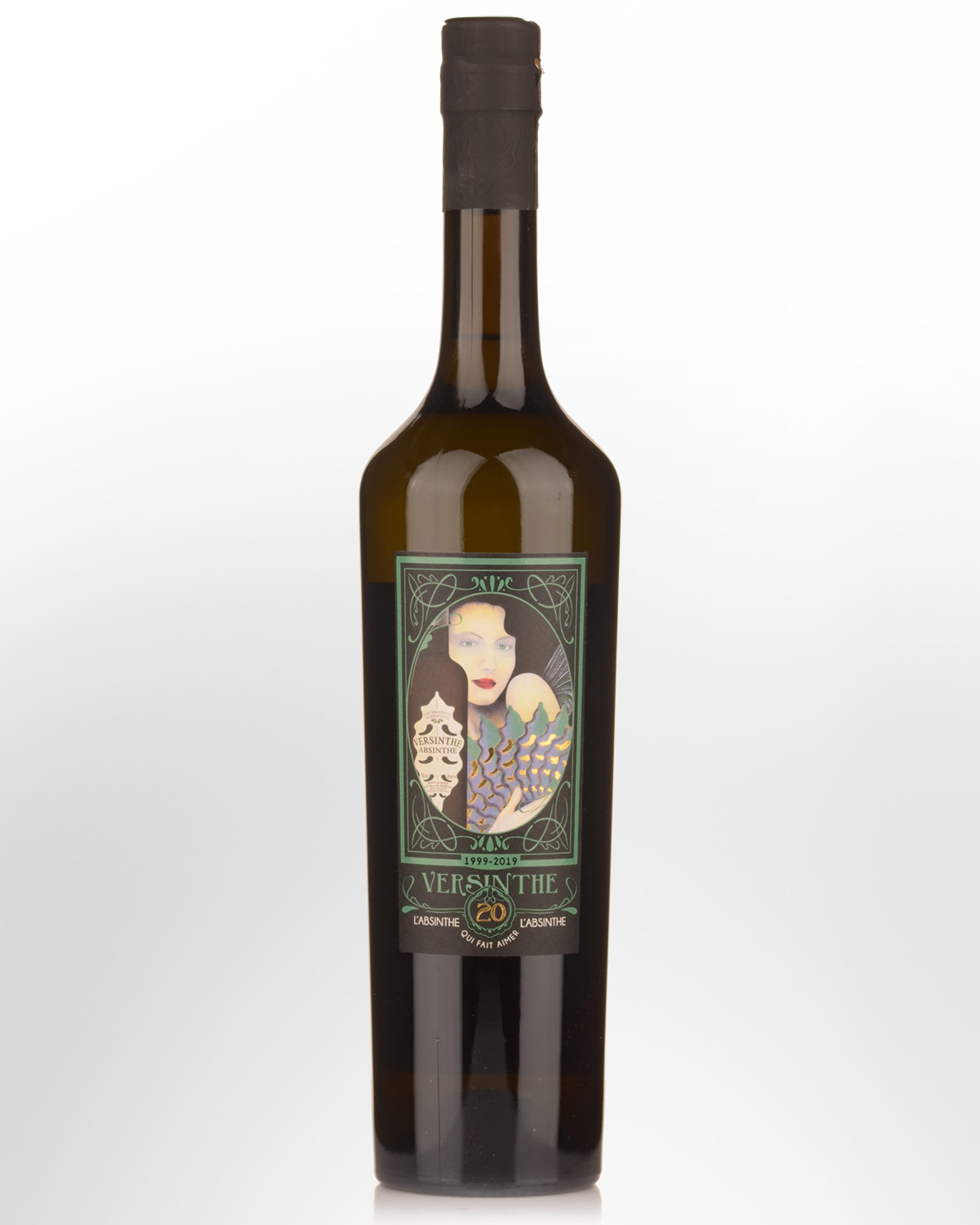
Versinthe Absinthe (700ml)
Possibly no other drink has the same romantic history as Absinthe. The French Impressionists were primarily associated with the spirit; Toulouse Lautrec, Degas, Manet, Van Gogh and then the muse of writers from Verlaine and Rimbaud to Joyce and Hemingway. At the same time, no other drink has ever roused the same degree of passionate condemnation and no other drink has ever been banned outright in the way Absinthe was. After publicity about several violent crimes supposedly committed under the direct influence of the drink, Absinthe was banned from sale and production in most countries by 1915. The prohibition of Absinthe in France led to the growing popularity of pastis, another aniseed-flavoured liquor that did not use the key Absinthe ingredient, wormwood.
A simple maceration of wormwood produces an extremely bitter drink, due to the presence of the water-soluble absinthine - one of the most bitter substances known to man. Consequently, Absinthe will generally contain anise (often star anise) to counter the wormwood's bitterness. Other herbs commonly included in Absinthe recipes are Florence fennel, hyssop, melissa, Roman wormwood (Artemisia pontica), angelica root, sweet flag, dittany leaves, coriander, and other mountain herbs. Absinthe is usually a pale-green-yellow colour (giving it its nick name The Green Fairy), tasting much like an anise-flavoured liqueur, but with a more subtle flavour due to the many herbs used. Inferior varieties of Absinth are made by means of essences or oils, cold-mixed in alcohol. The alcohol content of an Absinthe is usually high (45%-65%), given the low solubility of many of the herbal components in alcohol.
An Absinth worthy of its name becomes cloudy with the addition of water, turning a soft green colour - not fluorescent green, which is the result of artificial ingredients. It should also contain an amount of Thujone. Thujone (pronounced thu - jOn ) is the psychoactive substance contained in wormwood. This is a controlled substance in Australia. It is a fragrant oily ketone occurring in various essential oils and also called 'absinthol' - C10H16O. The neurotoxin Thujone (Tanaceton) has a similar molecule structure to THC, the basic active agent of Cannabis. In combination with alcohol its effect is to make the consumer feel euphoric and inspired. It is also widely used as an aphrodisiac. Using high measures of thujone, hallucinatory effects have been reported. Undistilled, thujone is an epileptic in extremely high doses and the supposed ill effects of the drink were blamed on that substance in 19th century studies. However, it is now known that in the 19th century, like much food and drink of the time, Absinthe was occasionally adulterated by profiteers with copper, zinc, indigo, or other dye-stuffs to impart the green colour. While this was never done by the best distillers, it is thought that excessive intake of such impure products is bound to have been the cause for creating the condition 'absinthisme', which reputedly led to the aforesaid violent crimes. The other now controlled substance present in real Absinthe is Santonin. This substance can cause a peculiar temporary visual effect, where objects appear to be seen through a yellow glass. Santonin is also known as an anthelmintic, interestingly used as an agent to remove internal parasitic worms in humans and animals.
Marc Villacèque , producer of Versinthe Absinthe, is located in Provence in southern France, and has reconstructed a complex formula that includes twenty plants such as artemisia, sagebrush, wormwood, tarragon and gentian. These are the most important plants that give Versinthe its freshness, finesse, and bitterness. The bitterness from the plants above must be mastered and tamed and anise, fennel, coriander and dill are employed to counter this characteristic. Basil, rosemary, and angelica give a bitter-sweet blend to plants of the same nature and are needed to form a plant extract with punch. They enhance and give balance to the bitter and mild flavours. Peppermint and verbena add a splash of freshness to this blend. These contrasting flavours give Versinthe its subtlety and complexity and its natural perfume and colour. No artificial colouring agents are used. The elegant flavours of this spirit are enhanced if cold water is gently poured over a sugar cube placed on an absinthe spoon. (After pouring 20 to 30 ml of Versinthe into a glass, place half a sugar cube on the spoon and gently pour a thin stream of cold water on to it so so it disolves: this will draw out the rich flavours. Then use the spoon to mix the drink.) Purists prefer to drink straight Versinthe diluted with pure water and crushed ice. 45% alc/vol 7ppm Thujone. Contains extracts of two wormwoods.
